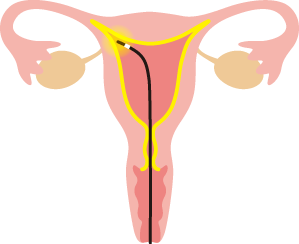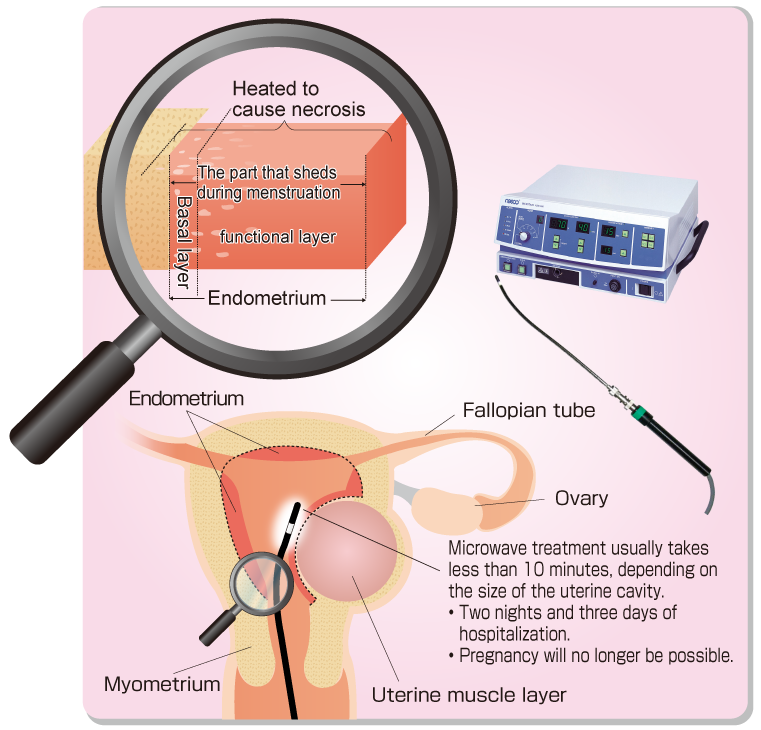Gynecology
Non-Incisional Treatment: MEA (Microwave Endometrial Ablation)
For those suffering from heavy menstrual bleeding or abnormal uterine bleeding
Inside the uterus, there is a soft tissue called the endometrium. This endometrium regenerates every month, and the old layer sheds, causing menstrual bleeding.
When uterine fibroids develop just beneath the endometrium or in cases of adenomyosis, the amount of bleeding during menstruation may increase, potentially leading to anemia.
A new treatment method: MEA (Microwave Endometrial Ablation)
For patients experiencing heavy menstrual bleeding or persistent abnormal bleeding, treatment has traditionally involved medication or, in some cases, surgery. However, a new treatment method called MEA (Microwave Endometrial Ablation) has recently gained attention.
MEA uses a 4mm diameter metal tube to emit microwaves from inside the uterus, ablating the endometrial tissue. This treatment can significantly reduce the amount of bleeding after the procedure.

The microwave applicator has a diameter of 4 mm, allowing it to be smoothly inserted into the uterus.

The procedure is completed once microwaves have been applied to cover the entire inner surface of the uterine cavity.
Advantages of MEA
- Minimally invasive
Compared to open surgery or laparoscopic surgery, MEA places less strain on the body, allowing patients to quickly return to daily activities after discharge. - Uterus-preserving
Since the treatment does not require incisions, it serves as an alternative to hysterectomy. The procedure can be safely performed in just a few minutes to several tens of minutes without placing significant stress on the body.

Indications for MEA
During the 5 to 10 years leading up to menopause, it is common to experience heavier menstrual bleeding, prolonged periods, and various other symptoms. Some individuals may endure these difficult symptoms thinking, "Menopause is approaching soon anyway." In particular, many people prefer to avoid surgical or invasive treatments if possible.
For such patients, MEA can effectively treat heavy menstrual bleeding (menorrhagia).
However, MEA is not suitable for individuals who wish to become pregnant.
Indications
- Menorrhagia caused by uterine fibroids or adenomyosis, where the uterus is enlarged or deformed but the microwave applicator can easily reach the endometrium at the uterine cornua and fundus.
- Functional menorrhagia
- Menorrhagia caused by systemic disorders such as blood coagulation defects
- Patients who do not wish to become pregnant or give birth in the future
Contraindications
- If pregnancy is desired
- When uterine fibroids or adenomyosis cause enlargement or deformation, making it difficult for the microwave applicator to reach the endometrium at the uterine cornua and fundus
- In cases of atypical endometrial hyperplasia
- In cases of endometrial cancer
- When the uterine wall thickness is 10 mm or less
Treatment Process
-
First Visit
-
Second Visit
-
MEA(2 nights, 3 days)
-
Follow-up Visit
*Depending on the individual, it may take approximately 3 to 6 months to proceed with MEA.

